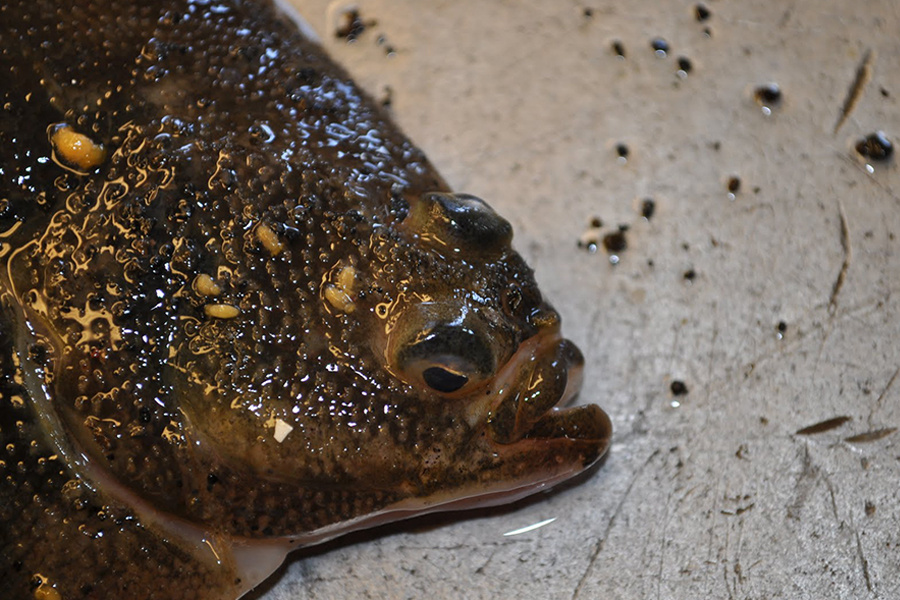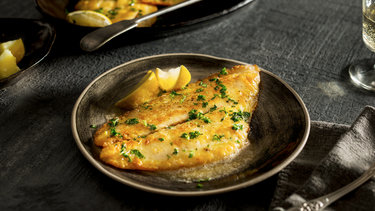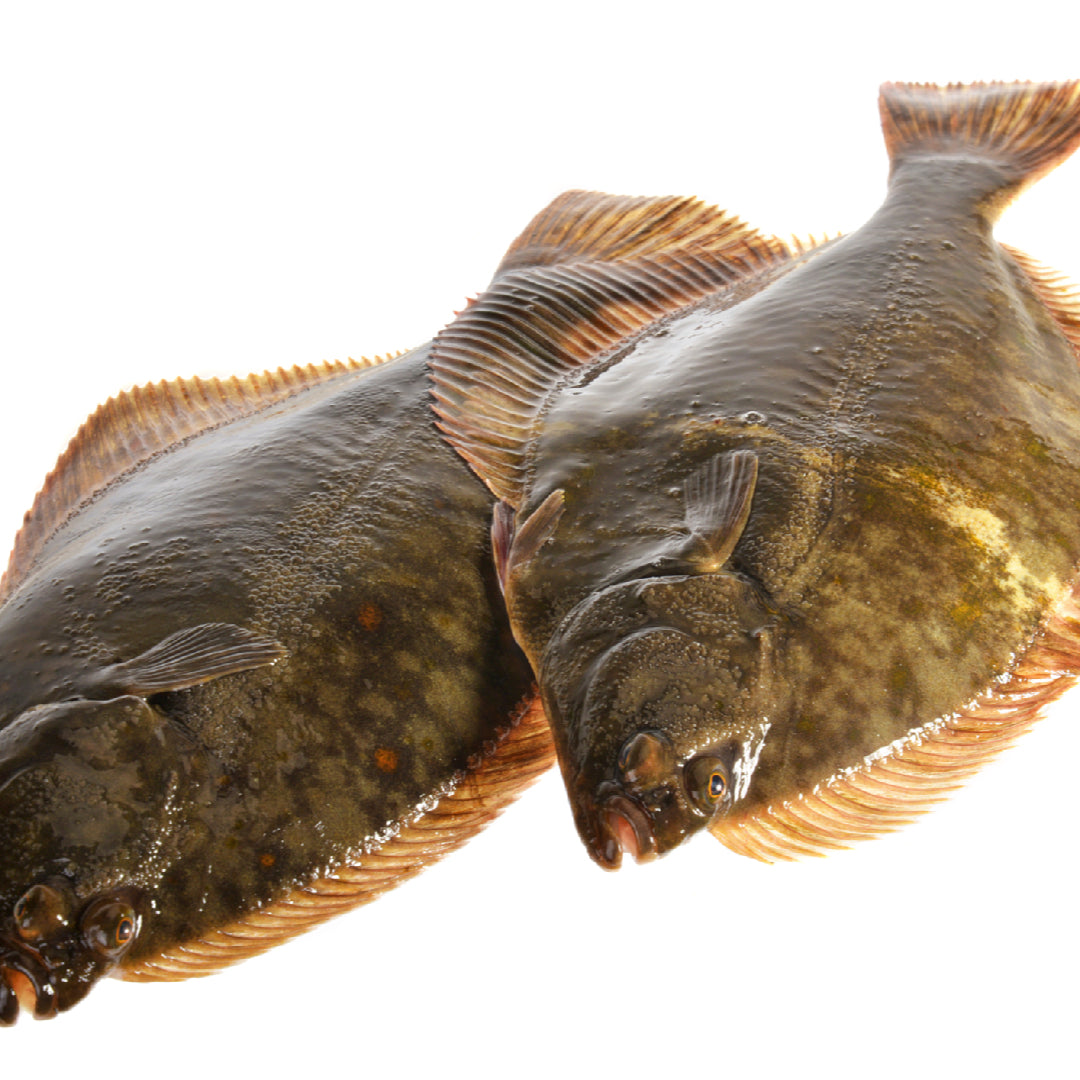Overview Of Sole Fish

Sole fish is a unique and flavorful flatfish that stands out from other popular fish species. With its delicate taste and distinct appearance, sole fish offers a culinary experience like no other. Whether pan-fried, grilled, or baked, sole fish remains tender and flaky, making it a favorite among seafood enthusiasts. Not only does sole fish taste great, but it also offers numerous health benefits. Packed with essential nutrients and minerals, consuming sole fish can support heart health, boost brain function, and promote overall well-being. With its versatility in cooking and exceptional nutritional value, sole fish is a top choice for seafood lovers.
1 What Is Sole Fish: An Introduction
Sole fish, also known as flatfish, is a popular and highly prized seafood delicacy. With its distinctive flat shape and delicate flavor, sole fish stands out among other fish species. It belongs to the flatfish family, along with other varieties like plaice and flounder. Sole fish is highly sought after by seafood lovers for its tender and flaky texture. Whether pan-fried, grilled, or baked, sole fish offers a unique culinary experience. In this section, we will delve deeper into the different species of sole fish and explore their nutritional value and cooking methods.
2 Common Species Of Sole Fish
There are several common species of sole fish that are popular in culinary and seafood industry. Two of the most well-known species are the true sole (Solea solea) and the Dover sole (Solea vulgaris). The true sole is found in the coastal waters of Europe and is highly regarded for its delicate flavor and tender flesh. The Dover sole, on the other hand, is native to the waters of the North Atlantic and is widely prized for its superior taste and texture. Both species of sole fish are highly sought after by chefs and seafood lovers for their culinary versatility and exceptional taste.
Nutritional Value Of Sole Fish

Sole fish may be lower in valuable nutrients compared to other types of fish, but it still offers some nutritional benefits. It is a good source of high-quality protein, which is essential for muscle growth and repair. Additionally, sole fish is low in fat and calories, making it a great option for those watching their weight. It is also a good source of vitamins and minerals, including vitamin B12, selenium, and phosphorus. Incorporating sole fish into a balanced diet can contribute to a healthy and nutritious meal plan.
1 Health Benefits Of Consuming Sole Fish
Consuming sole fish can offer several health benefits. Firstly, sole fish is a rich source of high-quality protein, which is essential for muscle growth and repair. It is also low in fat and calories, making it a great option for individuals watching their weight. Additionally, sole fish is rich in selenium, which is known for its antioxidant properties and plays a crucial role in immune function. Moreover, it is a good source of vitamin B12, which is important for nerve function and the production of red blood cells. Incorporating sole fish into a balanced diet can contribute to a healthy and nutritious meal plan.
2 Nutritional Content And Minerals In Sole Fish
Sole fish not only offers a delicious taste but also packs a punch in terms of nutrition. This lean flatfish is a good source of protein, which is essential for muscle growth and repair. It is also rich in important minerals such as selenium, which acts as an antioxidant and supports immune function. Additionally, sole fish contains significant amounts of vitamin B12, which is crucial for nerve function and the production of red blood cells. Incorporating sole fish into your diet can provide you with these essential nutrients and contribute to a well-rounded and healthy meal plan.
Cooking With Sole Fish

Sole fish offers a versatile and delicious option for cooking enthusiasts. Its delicate and tender flesh allows for various cooking methods that can enhance its flavors. Poaching the fish in a flavorful broth or sautéing it in butter and herbs can bring out its natural taste. You can also try deep-frying sole fish for a crispy and satisfying dish. Another popular cooking technique is pan-frying, where the fish is coated in breadcrumbs and lightly fried until golden brown. With so many options available, cooking with sole fish is an opportunity to experiment and create delicious meals for any occasion.
References:
draxe.com
1 Best Cooking Methods For Sole Fish
When it comes to cooking sole fish, there are a few methods that can really bring out its delicate flavors and tender texture. One popular technique is poaching, where the fish is gently cooked in a flavorful broth. This method allows the fish to remain moist and flavorful. Another great option is sautéing the sole fish in butter and herbs, which creates a delicious, crispy crust. If you want a crispy and satisfying dish, you can try deep-frying the sole fish. Lastly, pan-frying is a classic method where the fish is coated in breadcrumbs and lightly fried until golden brown. Whichever method you choose, cooking with sole fish is sure to result in a delicious and memorable meal.
2 Delicious Sole Fish Recipes To Try
Are you ready to explore the delicious possibilities of cooking with sole fish? Here are two mouth-watering recipes that will take your dinner to the next level.
- Sole in Lemon Butter Sauce (Sole Meuniere):
Ingredients:
- Sole fillets- Flour for dredging- Salt and pepper- Butter- Lemon juice- Parsley for garnish
Instructions:
1. Season the sole fillets with salt and pepper, then lightly dredge them in flour.
2. Heat butter in a skillet over medium-high heat. Cook the sole fillets for 2-3 minutes on each side, until golden brown.
3. Remove the fillets from the skillet and keep warm.
4. In the same skillet, melt more butter and add lemon juice. Cook for a few more minutes until the sauce thickens.
5. Pour the lemon butter sauce over the sole fillets and garnish with parsley. Serve hot and enjoy!
- Baked Stuffed Sole:
Ingredients:
- Sole fillets- Crab meat- Bread crumbs- Chopped onion- Chopped celery- Chopped garlic- Lemon juice- Butter- Salt and pepper
Instructions:
1. Preheat the oven to 375°F (190°C).
2. In a skillet, melt butter and sauté onion, celery, and garlic until softened.
3. In a bowl, mix the sautéed vegetables with crab meat, bread crumbs, lemon juice, salt, and pepper.
4. Lay the sole fillets on a baking dish and spoon the crab stuffing onto each fillet.
5. Roll up the fillets and secure with toothpicks.
6. Bake for about 15-20 minutes, until the fish is cooked through and the stuffing is golden brown.
7. Serve the baked stuffed sole with your favorite side dish.
These recipes showcase the delicate flavor of sole fish while incorporating complementary ingredients that elevate its taste. Try these delicious recipes and get ready to impress your family and friends with a memorable meal. Enjoy!
Sustainability Of Sole Fish

The sustainability of sole fish is a critical consideration when consuming seafood. Fortunately, certain species of sole fish, such as Dover sole, are a responsible seafood choice due to their sustainable harvesting practices. Dover sole, for example, is found in the waters of the North Atlantic and is not only a delicacy but also a sustainable option. By choosing species like Dover sole, individuals can enjoy the delicious taste of sole fish while also supporting environmentally-friendly fishing practices. It is important to check for certifications and labels that indicate sustainable sourcing when purchasing sole fish.
1 Environmental Impact Of Sole Fish Harvesting
The environmental impact of sole fish harvesting is a concern due to the methods used in catching this species. Large nets, known as bottom trawls, are often used to target bottom-living fish like sole. However, this fishing method can cause significant damage to sensitive habitats on the ocean floor. The nets can disturb the seafloor, destroying coral reefs and other important ecosystems. Additionally, bycatch is a major issue in sole fish harvesting, with non-target species being unintentionally caught and harmed in the process. These unsustainable practices can have long-term ecological consequences and threaten the overall health of marine ecosystems.
2 Sustainable Practices In Sole Fish Fishing
Sustainable practices in sole fish fishing are crucial for preserving the population and maintaining the health of marine ecosystems. One important measure is the implementation of carefully regulated catch limits, which ensure that only a certain number of sole fish are harvested to prevent overfishing. Additionally, net mesh sizes are controlled to minimize the capture of juvenile fish, allowing them to grow and reproduce. Efforts are also made to reduce bycatch, which refers to the unintentional capture of non-target species. By implementing these sustainable practices, the fishing industry can help ensure the long-term viability of sole fish populations and protect the delicate balance of marine ecosystems.
Culinary Uses Of Sole Fish

Sole fish is highly prized in culinary circles for its delicate texture and subtle flavor. It is often used in a variety of dishes, from simple preparations to more elaborate recipes. Sole fish can be pan-fried or grilled to bring out its natural sweetness, or baked and stuffed with a flavorful filling. It is also a popular choice for fish soups and stews, adding a rich and comforting taste. In addition, sole fish is frequently used in sushi and sashimi preparations, showcasing its freshness and delicate flavor. Its versatility makes sole fish a favorite ingredient among chefs and home cooks alike.
1 Sole Fish In Different Cuisines
Sole fish is a versatile ingredient that is used in various cuisines around the world. In French cuisine, sole meunière is a classic preparation where the fish is pan-fried in butter and served with a lemon and parsley sauce. In Mediterranean cuisine, sole is often grilled or baked with olive oil and herbs for a lighter and healthier option. In Asian cuisine, sole fish is commonly used in stir-fries and steamed dishes, highlighting its delicate flavor. Whether it’s in European, Mediterranean, or Asian cuisine, sole fish adds a touch of elegance and flavor to any dish.
2 Pairing Sole Fish With Complementary Flavors
When it comes to pairing sole fish with complementary flavors, the options are endless. The delicate and buttery taste of sole fish pairs well with a variety of ingredients. One classic pairing is to serve sole fish with a lemon and caper sauce, which adds a tangy and savory element to the dish. Another delicious option is to pair sole fish with fresh herbs like parsley or dill, which enhance the natural flavors of the fish. For a more exotic twist, try pairing sole fish with tropical fruits like mango or pineapple, adding a burst of sweetness to every bite. Whether you prefer citrusy, herbaceous, or fruity flavors, there is a perfect complementary pairing for sole fish to satisfy your taste buds.
Conclusion

In conclusion, exploring the world of sole fish reveals its remarkable qualities as a versatile and nutritious seafood option. From its delicate flavor and firm texture to its abundance of health benefits, sole fish is a favorite among seafood lovers. Whether prepared in traditional or innovative ways, it never fails to impress. By practicing sustainable fishing methods and considering the environmental impact, we can ensure the future availability of this delicious fish. So, next time you’re in search of a tasty and nutritious meal, consider including sole fish in your culinary adventures. Bon appétit!
1 Summary Of Sole Fish Exploration
In summary, exploring the world of sole fish has revealed its remarkable qualities as a versatile and nutritious seafood option. From its delicate flavor and firm texture to its abundance of health benefits, sole fish is a favorite among seafood lovers. By practicing sustainable fishing methods and considering the environmental impact, we can ensure the future availability of this delicious fish. Whether prepared in traditional or innovative ways, sole fish never fails to impress. So, next time you’re in search of a tasty and nutritious meal, consider including sole fish in your culinary adventures. Bon appétit!
2 Final Thoughts And Recommendations For Sole Fish Consumption
In conclusion, sole fish offers a versatile and nutritious option for seafood lovers. However, it is important to be mindful of the potential risks associated with contamination and unsustainable harvesting practices. When consuming sole fish, it is recommended to choose sustainably sourced options and avoid consuming it in excess due to its potential for contamination. Additionally, individuals with specific health conditions or concerns should consult with their healthcare provider before including sole fish in their diet. By being informed and making conscious choices, individuals can enjoy the delicious flavors and benefits of sole fish while minimizing potential risks.
FAQ About Exploring The Ocean: What Is Sole Fish?
Q: What is sole fish?
A: Sole fish is a type of flatfish found in oceans around the world. They have a mild, sweet flavor and are valued for their delicate texture.
Q: How is sole fish different from other fish?
A: Sole fish is unique due to its flat body shape, with both eyes on the same side of the head. This adaptation allows them to lie camouflaged on the ocean floor.
Q: What are the health benefits of eating sole fish?
A: Sole fish is a good source of lean protein, vitamins B6 and B12, as well as minerals like phosphorus and selenium. It can support heart health and provide essential nutrients for the body.
Q: How is sole fish prepared and cooked?
A: Sole fish can be baked, grilled, fried, or poached. Its delicate flavor pairs well with herbs, butter, lemon, and spices. It is often served with light sauces or in seafood dishes.
Q: Is sole fish sustainable to consume?
A: Sole fish is considered a sustainable seafood choice when sourced responsibly. Look for certifications like Marine Stewardship Council (MSC) to ensure the fish is harvested in an environmentally friendly manner.
Q: Are there any variations of sole fish?
A: Yes, there are different types of sole fish, including Dover sole, lemon sole, and grey sole. Each type has its own unique flavor profile and can be prepared in various ways.

The Finer Diner has a rich history deeply rooted in the Mt. Oliver and Hilltop community. Our journey began with a simple yet ambitious vision – to create a welcoming space where friends and families could come together to enjoy delicious, comforting meals in a classic diner-style setting. Since our establishment, we have been dedicated to serving food, creating lasting memories, and fostering a sense of belonging within our community. Our commitment to quality, authenticity, and exceptional service has been the cornerstone of our success.